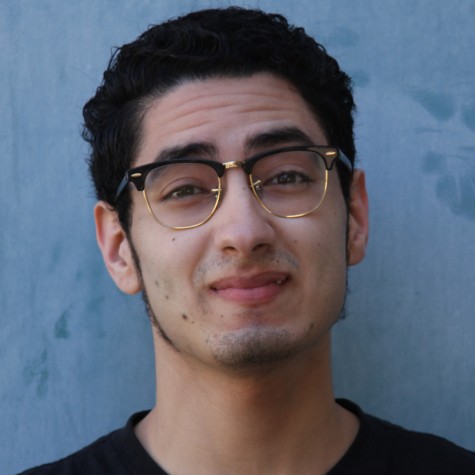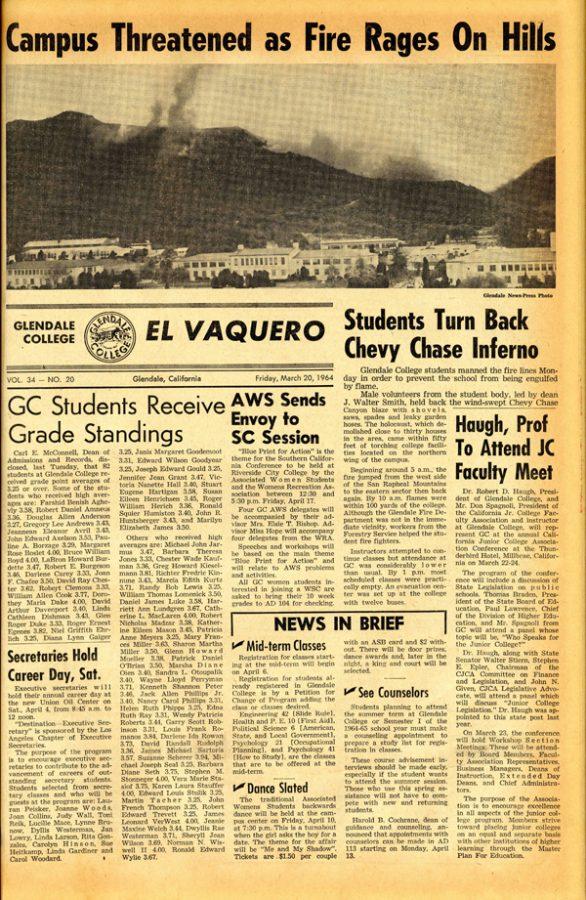Connecting Past with Future: Glendale College librarian introduces digital archive project and upgrades to modern age
Courtesy of Pasadena Digital History
OLD NEWS: Issues of El Vaquero are preserved and digitized by Emerging Technologies Librarian Adina Lerner and Library Technician Scarlet Yerissian.
Instruction Librarian Susie Chin presented Glendale College’s digital archive project to board members after working on it since fall 2014 when it was funded by the Glendale College.
“Funding by the foundation provided the physical equipment as well as a server, licensing, consultant fees and training for all the people involved in the project,” Chin said.
Emerging Technologies Librarian Adina Lerner and Library Technician Scarlet Yerissian have assisted with the project through their expertise and with the actual scanning of the images from the archive.
Anyone can now access the website bit.ly/GCCArchive or pasadenadigitalhistory.com to browse the current set of digitized photos and documents.
“We digitized a sample of objects in the GCC archives that were the most compelling,” Chin said. “Each object was chosen to appeal to different constituencies on campus.”
For example, what is searchable in the archive includes documents such as past issues of El Vaquero or a handwritten letter from a student in 1973.
It also contains a broad range of pictures that chronicle the history of the campus, students, faculty and administration.
Licensing and hosting are through the Pasadena Digital History Collaboration, which offered its established infrastructure.
“They have the website, licensing, the staffing and technical expertise to manage the project,” Chin said.
Digitizing the archive allows for preservation of documents and photos which removes the possibility of any future mistreatment.
“We want to make sure that what we have is available and has longevity,” Chin said. “The more something is handled, the more it is going to deteriorate and disintegrate.”
The transition also opens doors for curriculum development by allowing professors to use the available resources.
“[The archive can] teach students about primary sources, how history has evolved and how a lot of issues have changed,” Chin said.
It can also demonstrate “how different constituents, students, faculty, administration and board members see an issue and [interpret] it differently.”
The history of the GCC archives is that it’s an ambition of one person and former Associate Dean Linda Winters, who gave light to the collection.
“[Winters] felt it was important and started collecting and letting people know that we are beginning to build archives,” Chin said.
The physical archive, located in the library, was never fully handled or maintained by anyone. There were only people coming in temporarily and without full-time commitment.
The archive currently lacks an organized way for people to access the resources.
“The archive has a lot of different collections, but it’s not comprehensive,” Chin said. “There are inconsistencies in terms of what we have.”
Essentially, another reason for digitizing the archives includes reaching out to a broader audience outside of Glendale College as well as engaging the community with the college by identifying photos and documents.
Chin gave the example of a photo of a GCC cheerleader and how digitizing the archive can help in identifying it.
“There’s a way for someone else across the country to see it and say ‘oh my gosh that’s my grandmother and her name was Sandy Smith,’” Chin said.
Also if a student wanted to use a photo for a presentation about the history of GCC, they could download an image from the online archive. In the past, one would physically have to go to the archives and search for that photo.
An online finding aid is being developed, so anyone accessing the collection on their computer or mobile phone could easily search for the items they want.
Financial support and encouragement from students and faculty are needed to fulfill the necessities of the project.
“To institutionalize a campus-wide digital archive, my hope is that this sampling and the seed money the foundation has contributed to this project will inspire the campus,” Chin said. “And any constituents on this campus to see that knows this is an important project.”

Mark Nassim is a returning student at Glendale Community College. He prides himself to have an eclectic and eccentric personality which derives from his...

